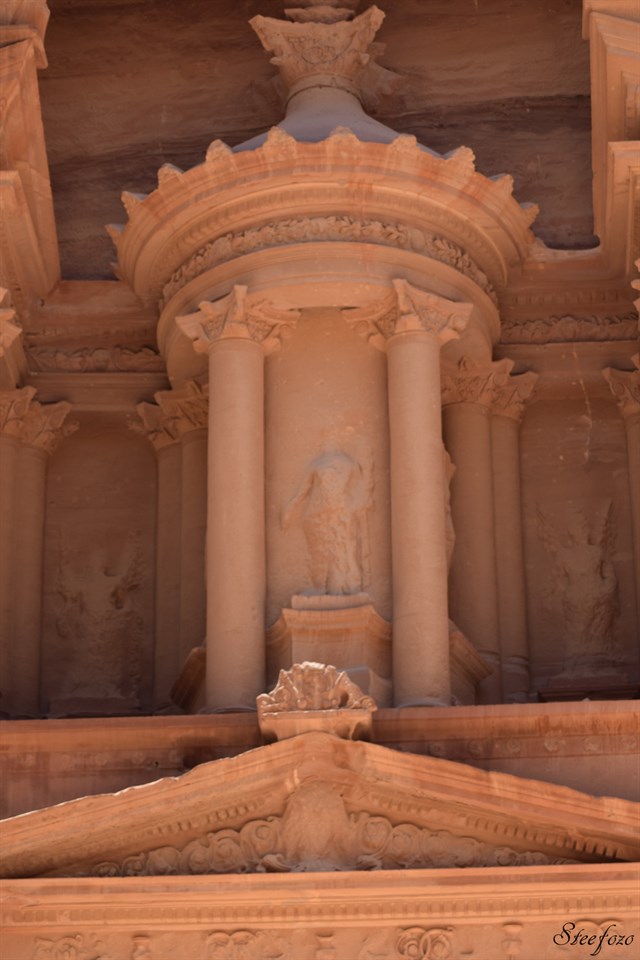Once the stronghold of the talented Nabataean people Petra is renowned for its massive carved architecture and its ingenious pools, dams and water channels. Over 2000 years later, Petra is one of the Middle East s most significant sites of antiquity.
Its builders are hailed for their business acumen, artistic ability, and superior technical innovation.
Dominating the Trade Routes
Two hundred miles south of Amman in the Jordan wilderness hides this forgotten carved city. Petra is the legacy of an industrious people who settled in the land 2000 years ago. They dominated the trading routes of the famous Mesopotamian King s Highway from their concealed city.
From north and south caravans of traders, laden with the spices and silks of India and the ivory and skins of Africa, took shelter in the hidden caverns of the red-rock city.
Roman Annexation
The Nabataeans were at their height of regional influence through to the end of the first century AD. Petra s increasing domination and prosperity was a threat to the growing Roman Empire. In 106 AD Rome annexed the peaceful Nabataean Kingdom into a Roman province and made Petra its capital of Arabia.
The Roman trade routes did not include Petra and it rapidly fell into decline until it was completely unknown to the western world by the 16th century. For almost 300 years it remained lost until, in 1812, Swiss adventurer, Johann Burckhardt, dressed as a Syria peasant, convinced his Bedouin guide to take him to the legendary lost city
First Excavations
Although Burckhardt was the first European to rediscover Petra it was not until 1924 that archaeological excavations were carried out. Archaeological research has since unearthed various areas of the old city that reveals much of the lives of its ancient inhabitants.
Spectacular Entrance
Its spectacular setting deep inside a narrow gorge will astonish any visitor to Petra. To access the city one must travel through a rather narrow entrance walkway known as the siq with steep mountain walls that soar 100 metres high. Inscriptions and carvings line the walls as well as rock-cut chambers and a water channel that threads its way along the winding siq for nearly one mile.
At the end of the siq appearing as if viewed through a slim, vertical, jagged keyhole is the treasury, Petra s most famous monumental building. It is wholly carved into Petra s rose red solid rock. It is in surprisingly good condition for a solid-carved stone building that has endured earthquakes and siege. One of its six stone columns had already fallen at the time Burckhardt saw it but this has now been repaired.
An urn, perched on the top of the treasury roof, was believed to have held countless treasures of gold and precious jewels. The design of this magnificent 30 metre wide façade is Hellenistic and follows the architectural conventions of depicting gods and mythological figures.
The Residential Areas
The archaeological record at Petra is still largely unexcavated. The obvious, above ground tombs and temples have been exhaustively reviewed for years as archaeologists have concentrated their efforts on these popular structures. But the city s red sandstone cliffs can provide more scholarly research than just the architectural splendour of carved rock monuments. More recently, archaeologists have been focussing their attentions on unearthing Petra s ruby-red residential areas.
Excavating the residential sites means gaining information about the Nabataeans themselves. Among the artefacts discovered are a relief carving of a standing eagle, an elaborately carved marble Roman vase with handles in the shape of panthers, a selection of gold and silver jewellery, decorative friezes and stucco work from temples and private homes, and an extensive collection of finely painted ceramic ware.
The objects from common homes in the residential district have helped archaeologists to see again the inhabitants of the lost stone city of Petra.



